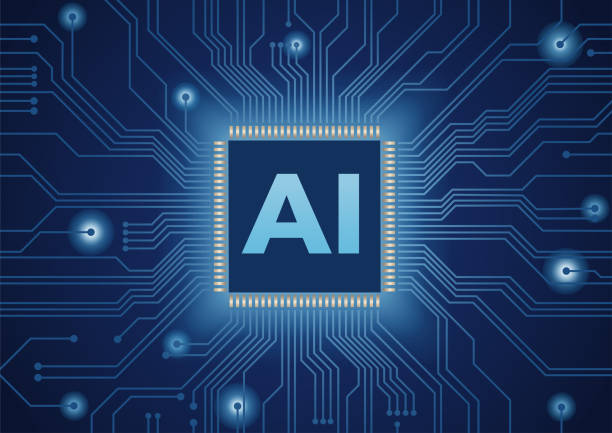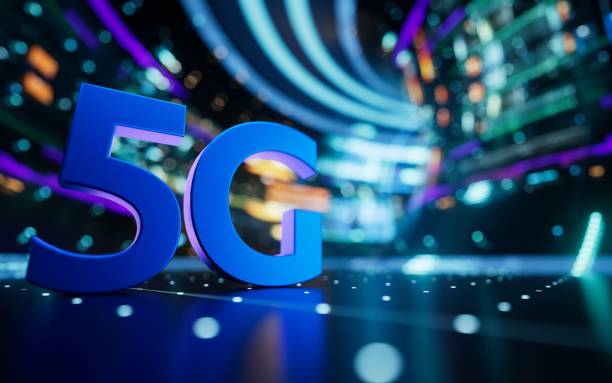In the early decades of computing, the central processing unit (CPU) was the undisputed heart of every digital system. It executed instructions, managed data, and defined the limits of computational power. However, the explosion of artificial intelligence (AI) and machine learning (ML) workloads over the past decade has changed that paradigm forever. Modern AI applications—ranging from deep neural networks powering natural language models to real-time computer vision systems—demand a scale and efficiency of computation that general-purpose CPUs cannot provide. This demand has given rise to a new generation of specialized processors: Tensor Processing Units (TPUs), Neural Processing Units (NPUs), and other custom AI chips that redefine the landscape of computing.
These custom accelerators are not just faster alternatives to CPUs—they represent a fundamental shift in how computation is designed, executed, and optimized for AI. While CPUs are flexible and versatile, they are inherently inefficient for the matrix-heavy, parallel workloads that dominate deep learning. Graphics Processing Units (GPUs) first bridged this gap by offering parallelism suitable for AI training, but the next leap came from hardware designed specifically for AI’s unique requirements. TPUs, NPUs, and similar architectures go beyond mere acceleration; they embed intelligence into the very fabric of computation, tailoring silicon to the mathematical patterns of machine learning.
To understand the significance of this shift, one must look beyond clock speeds or core counts. The evolution of AI hardware reflects an ongoing rethinking of what it means to compute. From the rise of tensor-centric designs and quantized arithmetic to the integration of AI accelerators into mobile devices and cloud data centers, the journey beyond the CPU is reshaping the future of technology.
This article takes an in-depth look at this transformation—exploring the evolution, architecture, performance, and future trajectories of TPUs, NPUs, and other custom AI processors. It examines how these chips differ from traditional processors, why they are essential to modern AI, and what their emergence means for the next decade of computing.
The Evolution of AI Hardware
The modern AI revolution began not with a new algorithm but with a shift in computing power. When deep learning reemerged in the early 2010s, researchers discovered that neural networks scaled dramatically with data and computation. Training a model like AlexNet in 2012 required processing millions of images—a task that CPUs of the time could not handle efficiently. GPUs, originally designed for rendering graphics, offered massive parallelism through thousands of small cores capable of performing simultaneous computations.
The adoption of GPUs for AI marked the first hardware-driven revolution in machine learning. Nvidia, the pioneer of GPU technology, recognized this early and developed CUDA, a programming model that allowed developers to harness GPUs for general-purpose computing. With CUDA, the GPU became the de facto standard for deep learning research and development.
However, as neural networks grew in size and complexity—from convolutional networks to transformers—the limits of GPU efficiency became apparent. The architectures were still general-purpose, optimized for a wide range of parallel workloads rather than AI specifically. Data movement between memory and compute units emerged as a bottleneck. Power consumption soared.
The industry responded by designing chips tailored explicitly for the linear algebra operations that dominate deep learning—matrix multiplications, vector additions, and tensor transformations. This gave birth to the Tensor Processing Unit (TPU), Google’s purpose-built AI accelerator, followed by the Neural Processing Unit (NPU) and other custom architectures from companies like Apple, Huawei, Tesla, and Amazon.
This progression reflects a fundamental principle of computing evolution: as workloads specialize, so does hardware. Just as GPUs evolved to handle graphics more efficiently than CPUs, AI accelerators now handle neural computation more efficiently than GPUs. The next decade promises even deeper specialization, with chips optimized not only for specific models but for entire application ecosystems.
The CPU: Foundation and Limitations
To appreciate why specialized AI chips emerged, it is essential to understand the strengths and weaknesses of CPUs. The CPU is a general-purpose processor designed to execute a wide range of instructions efficiently. Its architecture prioritizes flexibility over specialization. With a handful of powerful cores, large caches, and sophisticated branch prediction and out-of-order execution mechanisms, CPUs excel at running complex, sequential programs with diverse workloads.
However, deep learning models demand massive parallelism. Training or inferencing involves performing billions of matrix multiplications—operations that can be executed independently and in parallel. CPUs, with limited cores and constrained memory bandwidth, cannot match the throughput required for such workloads. Even with multithreading and vector extensions like AVX, CPUs struggle to keep up with the parallel demands of modern neural networks.
Another limiting factor is power efficiency. CPUs consume significant energy for relatively little computational output when running AI workloads. Their instruction pipelines, cache hierarchies, and control logic, optimized for flexibility, become overhead in the context of repetitive tensor operations. This mismatch between architecture and workload creates inefficiency, spurring the need for more specialized solutions.
Despite these limitations, CPUs remain indispensable. They handle the orchestration, control, and general-purpose tasks that specialized accelerators depend on. In most modern AI systems, CPUs work in tandem with GPUs, TPUs, or NPUs, managing data flow, task scheduling, and preprocessing. Rather than being replaced, CPUs are being redefined—as coordinators in heterogeneous computing environments where specialized chips handle the heavy lifting.
The Rise of the GPU: Parallelism for the AI Age
Before the advent of dedicated AI chips, GPUs transformed machine learning by providing the massive parallelism needed for training deep networks. Originally intended for rendering 3D graphics, GPUs are built to process thousands of pixels simultaneously. This architecture, characterized by hundreds or thousands of small cores optimized for throughput rather than latency, turned out to be ideal for the matrix and vector operations central to deep learning.
Unlike CPUs, which execute complex instruction sets across a few powerful cores, GPUs use a single instruction across many lightweight cores in parallel. This design allows them to perform floating-point operations at extraordinary speeds. The training of models like GPT-3 or image recognition systems like ResNet would be practically impossible without GPU acceleration.
The rise of GPUs also democratized AI research. Platforms like Nvidia’s CUDA and frameworks such as TensorFlow and PyTorch enabled researchers to easily write parallel code and deploy it on GPU clusters. The GPU became the workhorse of the deep learning era, powering breakthroughs in vision, speech, and natural language processing.
However, GPUs are still general-purpose accelerators, designed for workloads beyond AI. Their architecture includes components that AI tasks do not always utilize fully, leading to inefficiencies in power and data movement. As the scale of AI models continued to grow—requiring hundreds of petaflops of compute and terabytes of memory—GPUs began to show diminishing returns in cost and efficiency. This set the stage for the next evolution: chips designed from the ground up for AI.
Tensor Processing Units (TPUs): Google’s Answer to the AI Explosion
In 2016, Google unveiled the Tensor Processing Unit (TPU), a custom ASIC (application-specific integrated circuit) designed specifically for accelerating machine learning workloads. The TPU represented a radical departure from traditional computing paradigms. Instead of optimizing for flexibility, it was optimized for a single purpose: efficient execution of tensor operations at scale.
At the core of the TPU’s design is the systolic array, a hardware structure that enables highly efficient matrix multiplications. In a systolic array, data flows rhythmically between processing elements, minimizing the need for frequent memory access. This allows the TPU to achieve massive computational throughput while keeping power consumption low.
The first-generation TPU was designed primarily for inference, accelerating pre-trained models in Google’s data centers. Later generations—TPU v2, v3, and v4—expanded capabilities to include training, higher precision arithmetic, and distributed scalability. Google’s TPU Pods, collections of interconnected TPUs, now deliver performance in the exaflop range, enabling the training of massive language models and vision systems.
A key innovation in TPUs is their support for reduced-precision computation. While CPUs and GPUs traditionally rely on 32-bit or 64-bit floating-point operations, TPUs use 16-bit or even 8-bit formats for faster, more power-efficient calculations without significant loss of accuracy. This optimization aligns with the nature of deep learning, where approximate computations often suffice.
Google’s success with TPUs has influenced the entire semiconductor industry. Cloud providers, mobile manufacturers, and autonomous system developers have followed suit, creating their own AI-optimized chips tailored to specific domains.
Neural Processing Units (NPUs): Intelligence at the Edge
While TPUs dominate cloud-scale AI, NPUs are bringing intelligence to edge devices. The term “Neural Processing Unit” refers broadly to AI accelerators designed for low-power environments such as smartphones, IoT devices, and embedded systems.
NPUs perform many of the same operations as TPUs but are optimized for inference rather than training. They execute pre-trained models locally, enabling features like facial recognition, speech understanding, and real-time object detection without constant cloud connectivity. This local processing reduces latency, improves privacy, and conserves bandwidth.
One of the earliest NPUs appeared in Huawei’s Kirin chipsets, enabling on-device AI tasks in smartphones. Apple followed with its Neural Engine, integrated into A-series and M-series processors. These NPUs perform trillions of operations per second, powering advanced camera processing, augmented reality, and natural language understanding directly on the device.
NPUs typically use a hybrid architecture combining vector units, matrix multiplication engines, and specialized control logic. They rely heavily on quantized arithmetic, using 8-bit or even lower precision to maximize efficiency. By focusing on fixed-function operations, NPUs achieve exceptional performance-per-watt, making them ideal for portable and embedded systems.
The rise of NPUs signifies a broader trend: the decentralization of AI computation. As models become more efficient and hardware more capable, intelligence is moving from centralized data centers to the edge of the network—into phones, cars, and industrial sensors.
Architectural Differences: CPU vs GPU vs TPU vs NPU
Each class of processor—CPU, GPU, TPU, and NPU—represents a distinct architectural philosophy. The CPU emphasizes versatility, the GPU parallelism, the TPU specialization, and the NPU efficiency.
CPUs feature complex control logic, large caches, and a limited number of cores optimized for sequential instruction execution. GPUs sacrifice this complexity for massive parallelism, using simpler cores that perform many identical operations simultaneously. TPUs extend this idea further, replacing general-purpose cores with matrix-multiply units and systolic arrays that directly mirror the mathematical structure of neural networks.
NPUs, by contrast, focus on minimizing energy consumption and latency. They incorporate hardware accelerators for common neural operations such as convolutions, activations, and pooling. Their dataflow architectures ensure that data moves through the processor with minimal energy overhead, avoiding costly trips to main memory.
These architectural distinctions reflect different trade-offs in performance, power, and flexibility. CPUs can run any code but are slow for AI; TPUs are blazingly fast for AI but inefficient for general tasks. The future of computing lies in combining these processors within heterogeneous systems, where each chip type handles the tasks it performs best.
Dataflow and Memory: The Hidden Battle of AI Efficiency
While compute power often captures headlines, memory and data movement are the true bottlenecks of AI hardware. Moving data between memory and processing units consumes more energy than computation itself. In AI workloads, where large tensors must be repeatedly read and written, efficient memory access is critical.
Custom AI chips address this challenge through dataflow optimization. Instead of fetching data from external memory for each operation, they reuse intermediate results in local buffers or registers. Systolic arrays exemplify this principle—data flows through a network of processing elements, each performing partial computations and passing results onward.
Another key technique is near-memory or in-memory computation, where processing elements are placed close to or within memory arrays to reduce data movement. Emerging memory technologies such as HBM (High Bandwidth Memory) and MRAM (Magnetoresistive RAM) are also being integrated into AI chips to increase throughput and energy efficiency.
The battle for AI efficiency, therefore, is not only about faster processors but also about smarter data handling. As models continue to scale, innovations in memory architecture will become as important as advances in compute.
Software and Ecosystem Integration
Hardware alone cannot drive the AI revolution; it must be matched by robust software ecosystems. CPUs benefited from decades of compiler and operating system optimization, and GPUs gained traction through frameworks like CUDA and cuDNN. Similarly, TPUs and NPUs rely on software stacks that abstract hardware complexity and provide developer-friendly interfaces.
Google’s TensorFlow integrates seamlessly with TPUs, allowing researchers to train large models with minimal code changes. For NPUs, frameworks like Core ML (Apple), NNAPI (Android), and ONNX Runtime enable developers to deploy AI models across devices and platforms efficiently. These ecosystems are critical for adoption—they transform specialized hardware into practical tools.
Compiler technology plays a central role in bridging software and hardware. AI compilers translate high-level model descriptions into low-level instructions optimized for specific accelerators. This includes techniques like operator fusion, quantization, and memory scheduling. As AI models diversify, the importance of such compilers grows—they ensure that developers can target multiple architectures without rewriting code.
Power Efficiency and Sustainability
The proliferation of AI has brought immense computational demand—and with it, immense energy consumption. Training large-scale models like GPT-4 or Gemini requires megawatts of power, and data centers worldwide are struggling to balance performance with sustainability. Custom AI chips play a pivotal role in addressing this challenge.
By tailoring hardware to AI workloads, TPUs and NPUs achieve orders-of-magnitude improvements in energy efficiency compared to CPUs or GPUs. Reduced-precision arithmetic, specialized data paths, and optimized memory hierarchies minimize waste. Edge devices, powered by NPUs, perform complex inference tasks with milliwatts of energy, enabling AI applications in remote or battery-powered environments.
Sustainability is now a design goal, not an afterthought. Semiconductor manufacturers are exploring new materials, 3D chip stacking, and advanced cooling systems to further reduce environmental impact. In the long term, AI hardware will evolve toward carbon-aware computation—systems that schedule workloads based on renewable energy availability and thermal efficiency.
The Economics and Competition of AI Silicon
The rise of custom AI chips has transformed not only technology but also economics. For decades, the semiconductor industry was dominated by a few giants producing general-purpose CPUs and GPUs. Today, nearly every major technology company designs its own AI silicon.
Google’s TPUs, Apple’s Neural Engines, Amazon’s Inferentia, Tesla’s Dojo, and Meta’s MTIA represent a new era of vertical integration. By designing chips in-house, companies can optimize hardware for their specific workloads, reduce dependency on external suppliers, and differentiate through performance and efficiency.
This has created a new competitive landscape in which chip design is strategic. Cloud providers compete not only on services but also on hardware acceleration. Automotive companies design AI chips for autonomous driving. Even startups are entering the fray with domain-specific architectures for robotics, healthcare, and finance.
However, the cost of chip development remains immense. Designing a custom ASIC requires billions of dollars in investment and years of research. Only companies with massive scale can afford such endeavors. This has led to an ecosystem where open standards and collaborative projects, such as RISC-V and open AI accelerators, are gaining traction.
Future Directions: Beyond TPUs and NPUs
The frontier of AI hardware is expanding rapidly. The next generation of accelerators will push boundaries in three dimensions: specialization, integration, and intelligence.
Specialization will continue as hardware targets increasingly specific tasks. Chips optimized for large language models, reinforcement learning, or generative AI will emerge. Integration will blur boundaries between compute and memory, between cloud and edge, and even between hardware and software.
Intelligence within hardware itself is also on the horizon. Future chips will monitor workloads, adjust precision dynamically, and reconfigure their data paths in real time. This concept, sometimes called adaptive or self-optimizing hardware, mirrors the flexibility of biological brains—a fitting direction for machines designed to emulate intelligence.
Quantum computing, while still experimental, represents another potential disruptor. Quantum accelerators could complement classical AI chips, handling optimization problems and large-scale probabilistic reasoning with unprecedented efficiency.
As Moore’s Law slows, the focus will shift from transistor scaling to architectural innovation. The AI hardware of the future will not simply be faster—it will be smarter, more efficient, and more interconnected than anything before.
Conclusion
The story of computing has always been one of abstraction and specialization. The CPU once reigned supreme as the universal processor, but the age of AI has revealed its limits. In its place, a new hierarchy of processors has emerged—GPUs for parallelism, TPUs for tensor computation, and NPUs for on-device intelligence. Together, they form the foundation of a new computational era where efficiency and adaptability matter more than raw clock speed.
Custom AI chips are more than technological marvels; they represent a philosophical shift in how we think about computation. Instead of building general-purpose machines and adapting workloads to fit them, we are now shaping silicon around intelligence itself. The boundary between software and hardware is dissolving as machine learning models inform chip design, and chips, in turn, redefine the capabilities of AI.
The journey beyond the CPU is not an end but a beginning—a glimpse into a future where computation becomes as fluid and dynamic as thought. Whether in massive data centers or in the palm of your hand, AI accelerators will power the systems that learn, adapt, and evolve with us. The future of intelligence will not merely run on silicon; it will be etched into its very structure.






